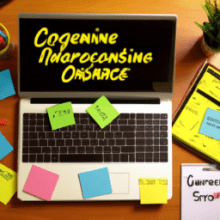How To Manage Negative Reviews And Feedback Online?
In this article, we will share some valuable insights on managing negative reviews and feedback online. Nobody likes receiving negative feedback, but it is inevitable in today’s digital age. However, the way you handle negative reviews can significantly impact your online reputation and customer perception. So, if you’re wondering how to effectively address and manage negative reviews, keep reading. We’ve got you covered with some practical strategies and tips to turn the situation around and maintain a positive brand image.

Respond Promptly
Acknowledge the negative feedback
When it comes to managing negative reviews and feedback online, one of the first steps is to respond promptly. As a business owner or representative, it’s important to acknowledge the negative feedback that your customers or clients have left. By doing so, you show that you take their concerns seriously and value their input.
Apologize if necessary
If the negative feedback includes a valid complaint or an issue with your product or service, it’s important to apologize. A sincere apology can go a long way in resolving conflicts and repairing relationships with unhappy customers. Make sure to apologize for any inconvenience the customer may have experienced and assure them that their concerns will be addressed.
Offer a resolution or explanation
In addition to acknowledging the negative feedback and apologizing if necessary, it’s crucial to offer a resolution or explanation. This could involve offering a solution to the customer’s problem, such as a refund, replacement, or discount on their next purchase. It’s also important to explain any actions you have taken to prevent similar issues in the future. By providing a resolution or explanation, you show your commitment to improving customer satisfaction.
Stay Professional
Remain calm and composed
One of the most important things to remember when responding to negative reviews online is to remain calm and composed. It’s easy to get defensive or emotional when faced with criticism, but it’s essential to maintain a professional demeanor. Take a few deep breaths before crafting your response and remind yourself to stay focused, respectful, and objective.
Avoid personal attacks
Responding to negative reviews online can sometimes lead to heated exchanges. However, it’s crucial to avoid personal attacks or derogatory language. Remember, your response reflects your business’s professionalism and reputation. Always keep the conversation focused on the issue at hand and address the concerns expressed by the customer without resorting to personal insults.
Respond in a polite and respectful manner
When crafting your response to negative feedback, it’s important to do so in a polite and respectful manner. Use courteous language and avoid using confrontational or defensive phrases. Show empathy and understanding towards the customer’s frustrations, and maintain a helpful tone throughout your response. By being polite and respectful, you demonstrate your commitment to providing excellent customer service.
Take Feedback Seriously
Listen to the feedback
When dealing with negative reviews and feedback, it’s essential to listen carefully to what your customers are saying. Take the time to read and understand their concerns fully. Pay attention to the specific details mentioned, as this will allow you to address the issues more effectively. By actively listening to the feedback, you show that you value your customers’ opinions and are dedicated to continuously improving your business.
Assess the validity of the concerns
While it’s important to take all feedback seriously, it’s equally crucial to assess the validity of the concerns raised. Not all negative feedback may be justified or accurate. Take a step back and objectively evaluate the situation. Look for any evidence that supports or refutes the claims made by the customer. If necessary, gather more information or consult with relevant team members before responding.
Identify opportunities for improvement
Negative feedback can often present valuable opportunities for improvement. Use this feedback as a learning tool to identify areas where your business can be more effective or efficient. Look for patterns or recurring themes in the negative feedback you receive. This will help you prioritize which areas to focus on for improvement. Taking feedback seriously and making necessary changes can lead to a stronger business in the long run.
Learn from the Feedback
Find patterns in the negative feedback
One of the best ways to learn from negative feedback is to identify patterns or common issues raised by multiple customers. Pay attention to any recurring themes that emerge in the negative reviews and feedback you receive. This will help you pinpoint specific areas where improvements can be made, whether it’s in product quality, customer service, or any other aspect of your business.
Use feedback as a learning opportunity
Instead of viewing negative feedback as purely negative, see it as an opportunity to learn and grow. Embrace the feedback as a chance to improve your products, services, and overall customer experience. By adopting a growth mindset and seeking out opportunities for learning, you can turn negative feedback into a catalyst for positive change.
Implement necessary changes based on feedback
To truly learn from negative feedback, it’s crucial to take action and implement necessary changes. Once you’ve identified patterns or common pain points, devise a plan to address them. This could involve updating your products or services, enhancing your customer service training, or making improvements to your processes. By taking concrete steps to address the feedback, you demonstrate your commitment to continuous improvement.

Encourage Positive Reviews
Provide exceptional customer service
One of the most effective ways to encourage positive reviews is to provide exceptional customer service. When customers have a positive experience with your business, they’re more likely to share their satisfaction with others. Focus on delivering prompt, friendly, and personalized customer service at every touchpoint. This will leave a lasting impression and increase the likelihood of positive reviews.
Ask satisfied customers for reviews
Another way to encourage positive reviews is to actively ask satisfied customers to leave feedback. Once you’ve provided excellent service or resolved an issue, kindly request that the customer consider sharing their experience online. This can be done through email follow-ups, post-purchase surveys, or personalized requests. Customers are often willing to leave reviews when they feel their opinion is valued.
Promote positive experiences on social media
Take advantage of social media platforms to promote positive experiences and reviews. Share positive feedback or testimonials from your customers on your social media pages. This not only highlights the positive side of your business but also encourages others to leave their own positive reviews. By showcasing positive experiences, you create a positive image for your brand.
Monitor Online Platforms
Regularly check review websites and social media
To effectively manage negative reviews and feedback online, it’s essential to regularly check review websites and social media platforms. Set aside dedicated time to monitor these platforms so that you can promptly respond to any negative feedback. By staying on top of the conversation, you demonstrate your commitment to addressing concerns and maintaining a positive online presence.
Respond to negative feedback in a timely manner
When negative feedback is left on review websites or social media, it’s crucial to respond in a timely manner. Aim to reply within 24-48 hours to show your dedication to resolving the issue promptly. Delayed responses can lead to further frustration from the customer and may escalate the situation. Responding promptly demonstrates your attentiveness and commitment to customer satisfaction.
Address any false or misleading reviews
In addition to responding to negative feedback, it’s important to address any false or misleading reviews that may arise. If you come across a review that contains inaccurate or misleading information, provide a factual and polite response. Offer the correct information or clarify any misconceptions. This shows other customers that you are proactive in addressing misinformation and maintaining your brand’s reputation.

Avoid Deleting or Ignoring Negative Reviews
Deleting or ignoring reviews can escalate the situation
While it may be tempting to delete or ignore negative reviews, it’s best to avoid doing so. Deleting reviews can escalate the situation further as customers may feel unheard or mistreated. Ignoring negative reviews can also damage your reputation, as it shows a lack of concern for customer feedback. Instead, focus on addressing the concerns head-on in a respectful manner.
Show that you value customer feedback
By not deleting or ignoring negative reviews, you demonstrate that you value customer feedback. Even if the feedback is negative, responding and engaging with the customer shows that you are dedicated to resolving their concerns. This can help build trust and credibility with both the customer who left the negative review and potential customers who see your response.
Address the concerns head-on
When faced with negative reviews, it’s essential to address the concerns head-on. Take the time to understand the issue and offer a genuine response that acknowledges the customer’s frustration. Apologize if necessary and provide a resolution or explanation. By addressing the concerns directly, you show your commitment to customer satisfaction and to resolving any issues that may arise.
Use Feedback to Enhance Customer Experience
Identify common pain points
Negative feedback often highlights specific pain points that customers experience. Pay close attention to these pain points and identify any recurring themes in the feedback. This information can help you improve the customer experience by addressing the underlying issues that lead to customer dissatisfaction.
Make improvements to products or services
Negative reviews can provide valuable insights into areas where your products or services can be improved. Use this feedback to make necessary changes or enhancements to meet customer expectations. Whether it’s refining a product feature, streamlining a process, or addressing quality issues, implementing these improvements can help enhance the overall customer experience.
Provide additional training for employees
Sometimes, negative feedback can be a reflection of inadequate employee training or performance. Take the opportunity to provide additional training or support for your employees, particularly in areas that customers have expressed concerns about. Training can help your employees better understand customer needs and deliver exceptional service. By investing in your employees, you create a positive customer experience.
Encourage Customer Dialogue
Invite customers to share their experiences
Encouraging customer dialogue is a great way to foster a positive relationship and gain valuable feedback. Invite customers to share their experiences through surveys, feedback forms, or comment sections on your website or social media platforms. This allows customers to openly express their opinions, and it shows that you value their input.
Respond openly and honestly to questions or concerns
When customers engage in dialogue by asking questions or expressing concerns, it’s important to respond openly and honestly. Take the time to address each inquiry or concern in a detailed and transparent manner. By responding in this way, you build trust with your customers and show that their opinions are valued.
Engage in meaningful conversations
Don’t simply respond to customer dialogue; engage in meaningful conversations. Ask follow-up questions to gain deeper insights into their experiences or concerns. This not only enhances your understanding of customer perspectives but also demonstrates your commitment to continuous improvement. Engaging in meaningful conversations fosters a positive relationship with your customers and can turn negative feedback into a positive experience.
Monitor and Manage Brand Reputation
Stay updated on what people are saying about your brand
Keeping a pulse on what people are saying about your brand is crucial for effective reputation management. Regularly monitor mentions of your brand on social media, review websites, and other relevant platforms. This allows you to promptly address any issues or concerns and protect your brand’s reputation.
Promote positive content about your brand
Managing your brand reputation involves actively promoting positive content about your business. Share success stories, customer testimonials, and positive reviews on your website and social media platforms. By showcasing positive experiences, you can counterbalance any negative feedback and shape public perception of your brand.
Address any reputation issues promptly
If you come across any reputation issues, it’s crucial to address them promptly. Whether it’s a negative article, a viral customer complaint, or a damaging rumor, take immediate action to mitigate the impact on your brand. Respond to the issue publicly and transparently, and provide accurate information or clarification to set the record straight.
In conclusion, managing negative reviews and feedback online requires prompt responses, professionalism, and a proactive approach to addressing customer concerns. By staying attentive to feedback, learning from it, and implementing necessary changes, you can enhance the customer experience and maintain a positive brand reputation. Encouraging positive reviews, actively monitoring online platforms, and engaging in meaningful customer dialogue are all essential for successful reputation management. Remember, every negative review can be an opportunity for improvement and growth.




